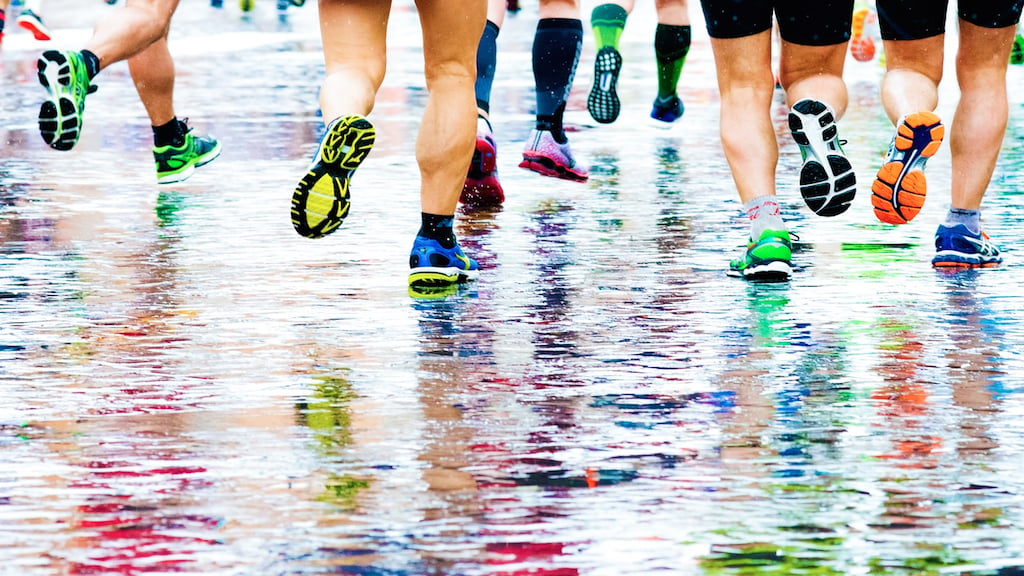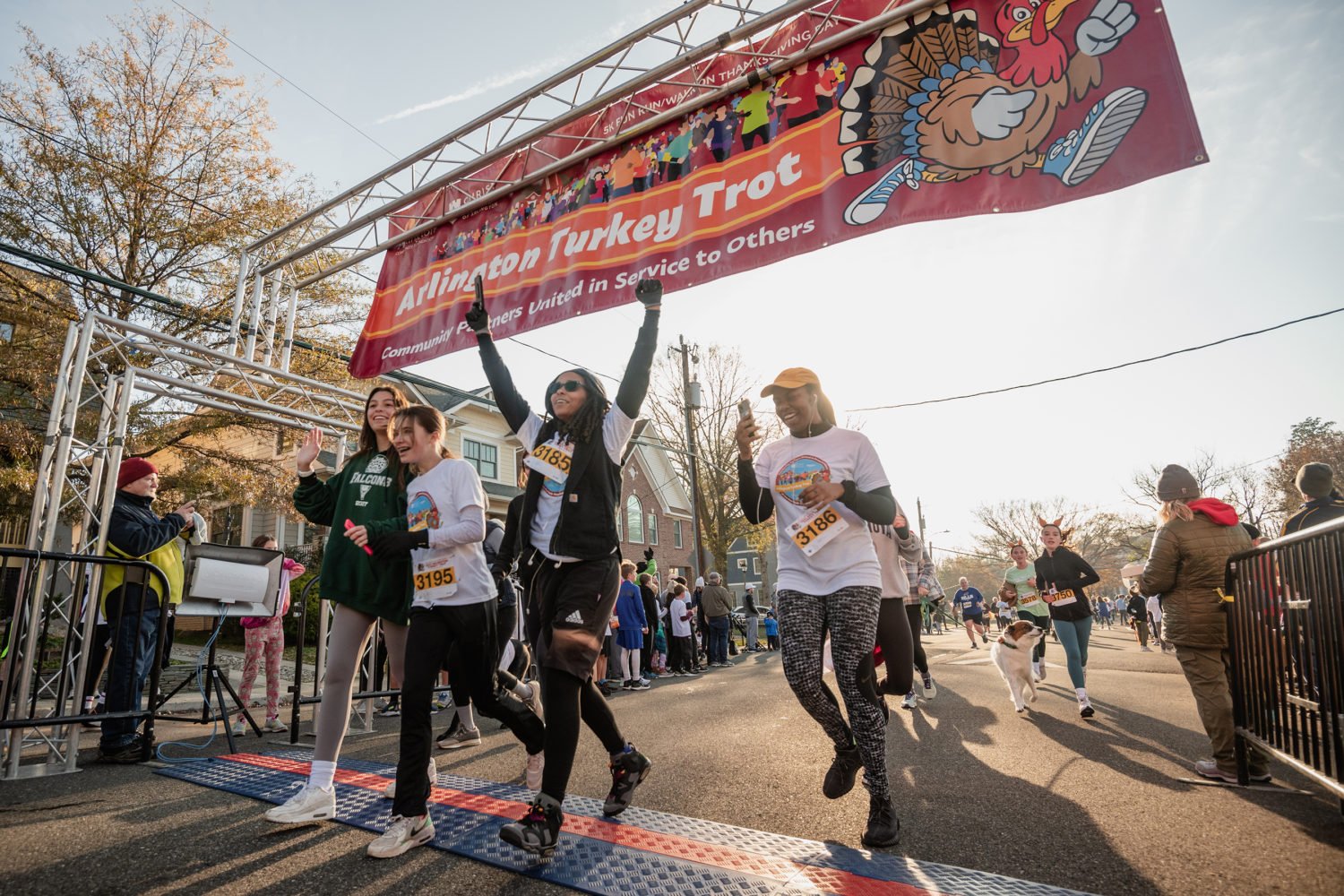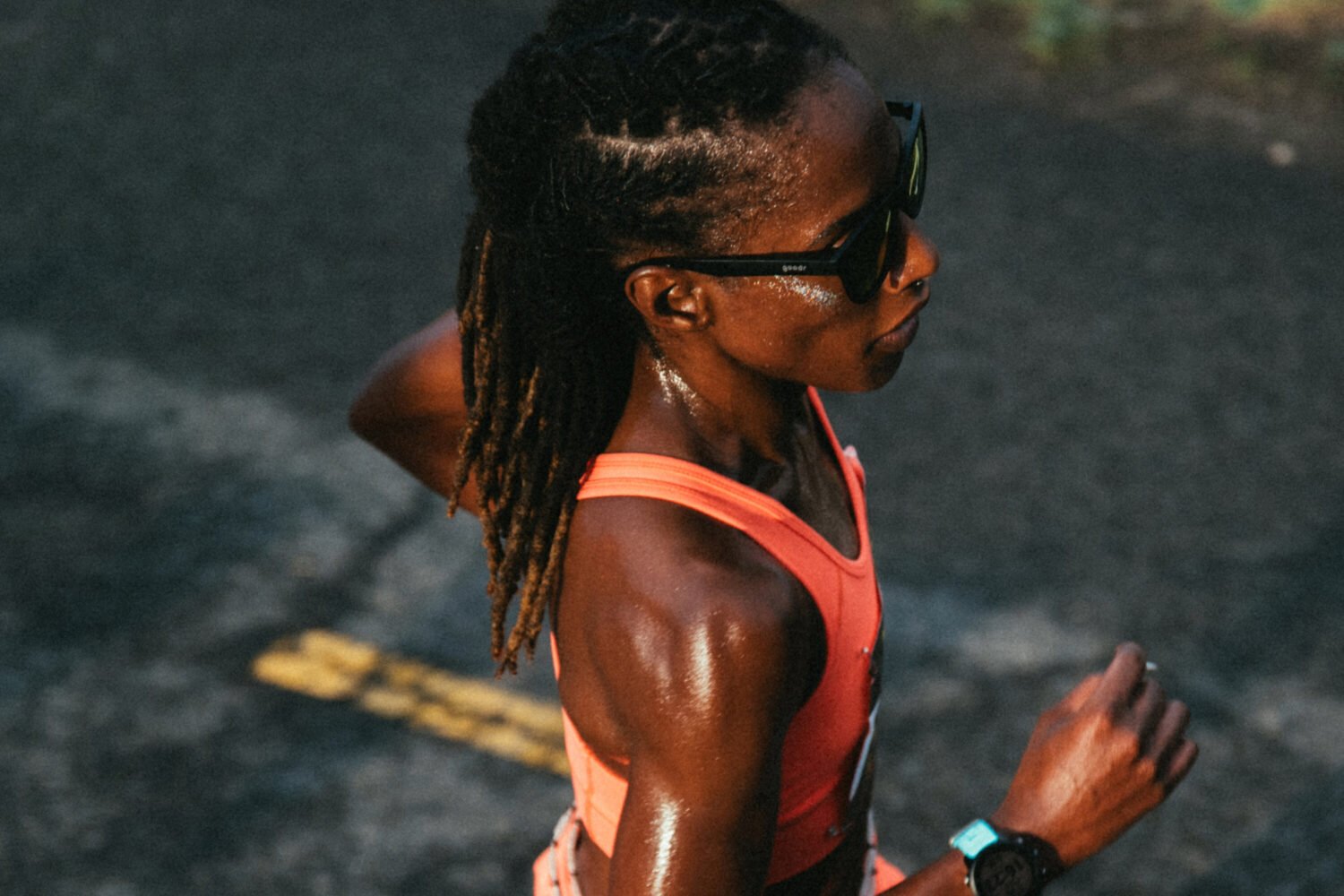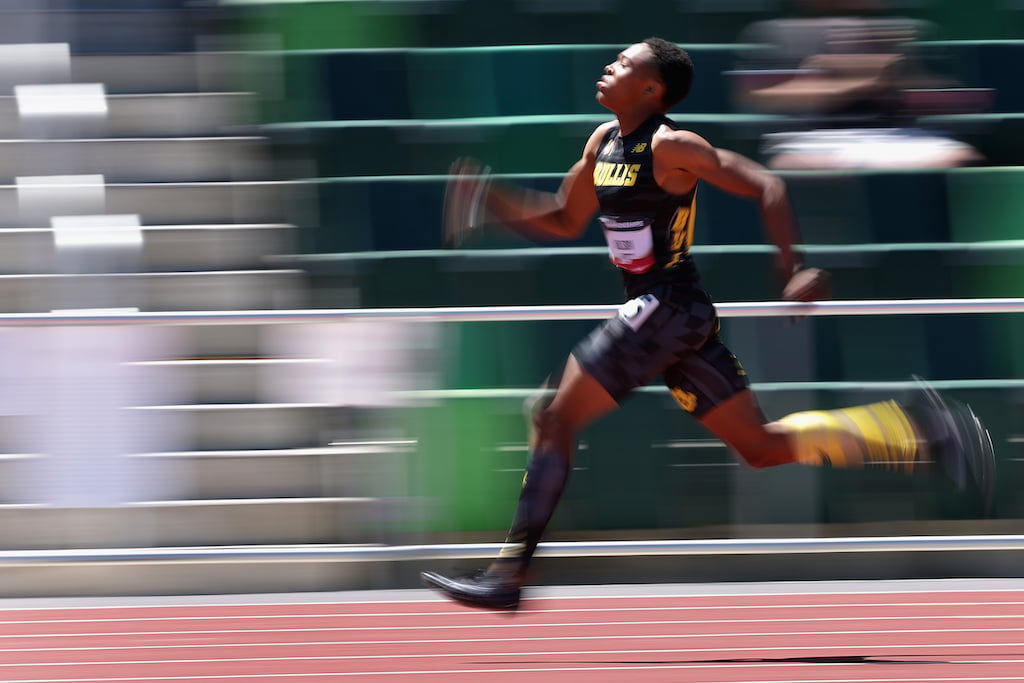When the forecast says rain but you’re looking to Boston-qualify—or at least PR—don’t despair. We asked Pacers Running CEO Kathy Dalby, who has served as race director for the Nike Women’s Half Marathon and the USATF National Road Racing Championships, how to embrace the elements on race day. Here are her ten tips for beating the rain.
1. Avoid the temptation to overdress.
“Soggy clothes can be a drag,” says Dalby, “and as always be sure to leave the cotton at home.” Cotton absorbs water, making it heavy, so opt for dry-wicking material instead. Wear a hat to keep your head warm and raindrops out of your eyes.
2. Hydrate.
Drink up beforehand and during the race as you would for a dry-weather event. “Even though it’s raining, you are still working hard out there,” says Dalby.
3. Seal electronics.
Invest in a waterproof case for your phone or a waterproof top with inside pockets. Or, if you don’t want to spend the money, simply put your phone in a [Ziploc] plastic bag, says Dalby. And don’t forget about other devices, such as Garmins and Fitbits. If they’re waterproof, they’re totally impervious to water. If they’re water-resistant, they can only repel water to some degree, so consider sealing them up.
4. Bring a second pair of shoes (and socks!).
Warming up beforehand will lead to wet feet, so Dalby recommends changing your shoes right before the start of the race, and don’t forget dry socks, too.
5. Skip the trash bag.
No makeshift ponchos here. “You’ll overheat wearing a garbage bag and the ‘swish-swish’ sound may make you crazy,” says Dalby. Wear a weather-resistant jacket instead.
6. Don’t cover your race bib.
Cautions Dalby, “Race bibs are durable to weather but are hard to read by timing systems if they are covered.” When removing layers, remember to keep your bib on the outermost one.
7. Your secret weapon: Body Glide.
“Rain leads to chaffing in all the wrong places,” says Dalby. “Apply Body Glide to key areas, with special consideration to feet, thighs, underarms, and bra straps.”
8. Look out for tight turns.
Turnarounds and sharp turns can be slippery, so opt for the wide turn and watch your step.
9. Bring a change of clothes and towel.
After the race, you’ll want to change out of wet clothes as soon as possible to avoid experiencing hypothermic symptoms, which can arise in chilly, wet environments after a runner has stopped running but heat is still rapidly escaping the body, causing the core body temperature to plummet. Dalby recommends either keeping dry items in your car or stashing in the bag drop area. If the latter, be sure items are protected in a plastic bag.
10. Have a good attitude.
Above all, says Dalby, “It’s going to be wet so embrace it.”
Then take a hot shower and put your feet up. You’ve earned it.



















